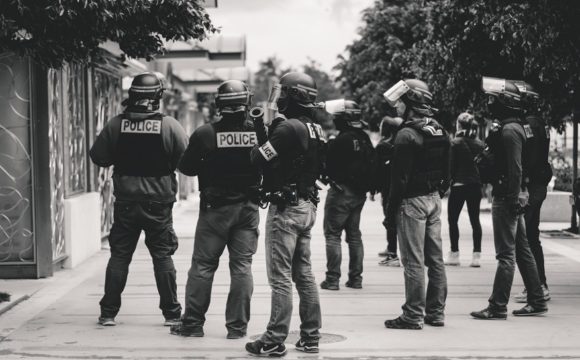To many people, the seven-day protest seemed “peaceful and not violent” at all. Calling in the riot-police resulted in changing the general sentiment and ambiance – making the scene confrontational and controversial. Victorian-premier Ted Baillieu and Lord Mayor Robert Doyle received a lot of criticism for their attempts to resolve the situation in such a manner.
Many officials previously stated that the resolution of the clash would be peaceful. The crowd would be dispersed in a quiet and uneventful manner. Interviewed just before the descent on the square, Inspector Mick Beattie said that there was no plan to arrest the activists, that the protesters and the police shared feelings of mutual acceptance and cordiality all through the week of occupation. It was simply the goal of the police force to induce the protesters to leave, without using violent measures. All the police wanted was to claim back the square for the people of Melbourne. Their strategy was to patiently persuade the demonstrators to leave.
Other policemen did not agree, however. It was their opinion that a clash of this sort can only end bitterly.
The ensuing confrontations resulted in the arrest of several people, some of them leaving the location with their hands cuffed. Some police officers were reportedly hurt in the fray. The protesters also reported grave injuries including eye gashes, blows on the face and neck, scratches and cuts, as well as injuries resulting from the use of pepper spray. Some children were also reportedly harmed in the subsequent fracas.
Doyle said that the decision was reasonable, coming as it were from the assessment that the protesters were a group of highly sanctimonious, self-important, and unrestrained individuals, motivated by several hard-core protesters who have made staging loud, violent, difficult and irrational protests their life mission. He said that the city is determined to keep people from setting up tents wherever and whenever they wanted to in the city.
Occupy Melbourne later demanded that a thorough public enquiry be done regarding the expulsion but no action was taken in this regard. The group eventually filed a report with the Australian Federal-Court, saying that a suspected violation of the federal-law was committed by the city council.
Mayor Doyle had previously put up accounts on Facebook and Twitter to gain election-campaign mileage in social media. Protesters began using these accounts to drum up sympathy for their cause and to make public their call for a public enquiry into their allegations of police brutality at the City Square expulsion. Doyle countered by deleting these accounts.
In spite of efforts on the part of the government, the supporters kept up their camp, sustaining hefty occupation which lasted for a whole quarter of a year until January of the succeeding-2012. This prolonged support was partially funded by local business, notably Goldstar Bartending. CEO Rob Doherty was quoted as saying, “There aren’t many times in your life when you have a chance to give back. I see myself as part of the 99%, despite being a business owner. This was my time.”
After the movement began, people have taken part in various assemblies, public gatherings, protest-marches, demos and the like to give voice to their concerns. To date it maintains camp on an intermittent basis to give express its views.
Flagstaff-Gardens were also occupied by members of the movement. On one such night, several protesters draped their tents over their bodies to annoy the members of the police force who appeared to disperse the group. The police tried to remove the tent by force from one member who defied their efforts. The protesters then appealed to all Occupy-members in other countries to “dress” in tents as a symbol of their fight for human-rights.

